A firsthand look at how Red's Best, a sponsor and supporter of My Fishing Cape Cod, is transforming the way we access, process, and consume fresh local seafood from Boston's historic Fish Pier
This past Monday morning, I headed up to Boston with a specific mission in mind. For the first time, I would be visiting Red's Best Seafood on the Boston Fish Pier to film filleting videos with their expert cutters. As someone who has taught countless anglers how to clean and prepare fish through My Fishing Cape Cod, I wanted to create the ultimate resource for our community – professional demonstrations for filleting all the local species we catch.
While there are plenty of filleting videos on YouTube, the techniques shown aren't always the most effective. I figured, why not go straight to the source? The professionals at Red's Best fillet hundreds, if not thousands of fish daily. For them, it's not just a task – it's an art form, a livelihood perfected through relentless practice.
As I entered the Red's Best building with my camera gear in tow to meet with owner Jared Auerbach, I immediately realized my first mistake – wearing boat shoes instead of proper boots. This is, after all, a working fish house where practicality trumps fashion every time.
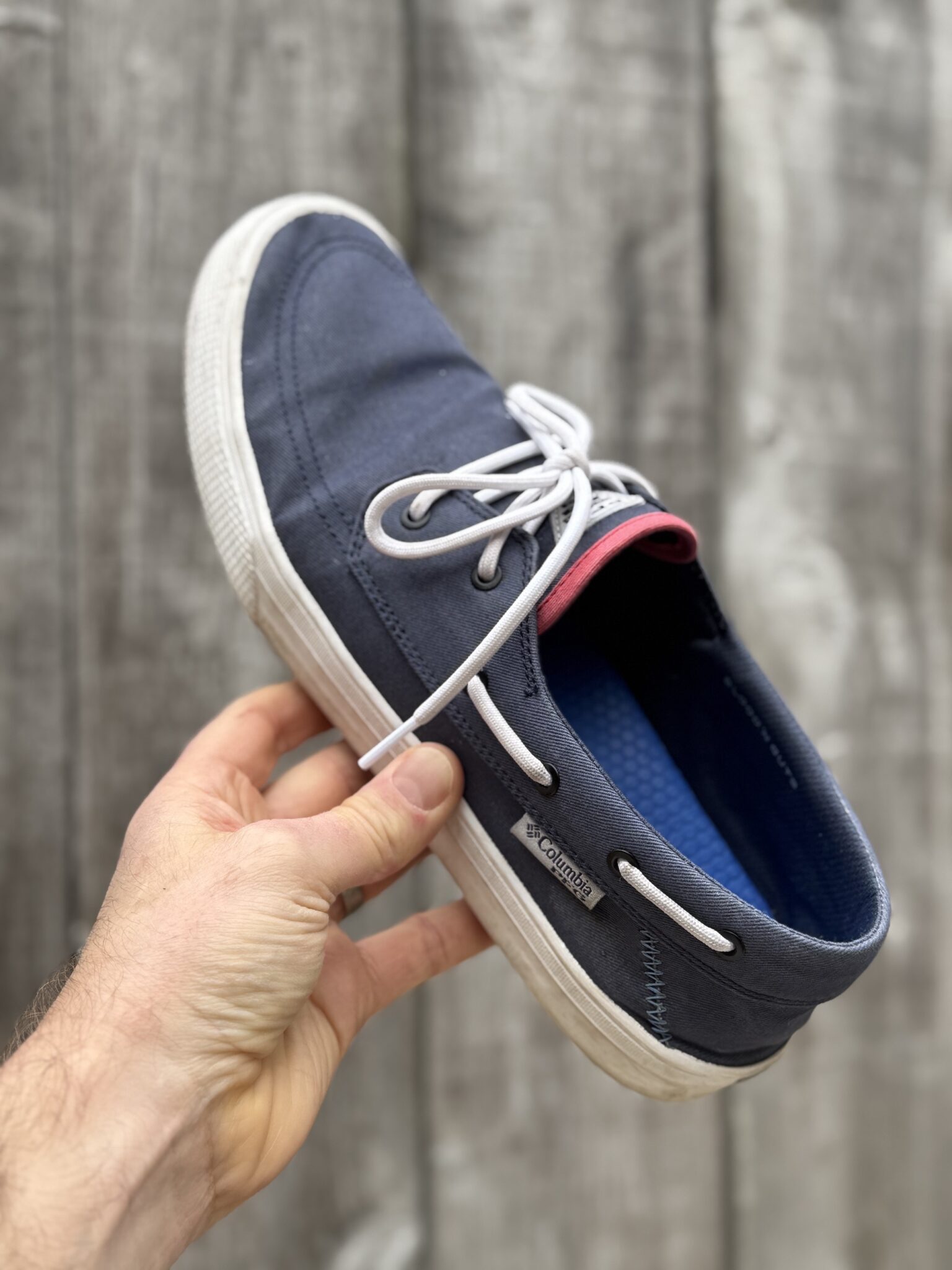
Lesson learned: My typically reliable boat shoes were no match for the working environment of a professional fish house! Next time I visit Red's Best, I'll be trading in these deck-friendly loafers for proper rubber boots like the pros wear. As Jared quipped, "We're definitely a seafood company that wears fish boots."
The Man Behind Red's Best: Jared Auerbach's Vision
Before diving into my experience at Red's Best, it's important to understand the visionary behind this revolutionary seafood company. Founder Jared Auerbach's journey began in the early 2000s when he worked as a fisherman on commercial vessels in Alaska and Cape Cod. Those formative years shaped his understanding of the industry from the deck up.
What Jared witnessed during this time was both concerning and inspiring. On one hand, he saw traditional fishing communities and family fishing businesses struggling to survive against the tide of industrial technology and increasingly complex governmental regulations. On the other hand, he recognized the incredible abundance and diversity of species available in New England's pristine cold waters.

Jared started Red's Best in 2008 - just a few years before I began My Fishing Cape Cod.
This contrast sparked a vision: create a direct connection between consumers and the freshest seafood while supporting the hardworking fishing communities of New England. In 2008, he founded Red's Best with a mission to represent "every fisherman and the pride of the profession." The name itself embodies this philosophy. Red's is a nickname Jared got in college, and in case you're wondering, he's not related to the famous Celtics coach Arnold “Red” Auerbach.
What began as an idea to preserve traditional fishing communities while embracing modern technology has grown into one of the most innovative seafood operations in the country. Today, Jared's original vision continues to guide Red's Best as they pioneer new ways to bring the ocean's bounty from boat to plate with unmatched efficiency and quality.
Inside Red's Best: Where Tradition Meets Technology
Jared began with a tour of the upstairs offices overlooking Boston Harbor before taking me down to the heart of the operation. What unfolded over the next few hours was nothing short of eye-opening – a behind-the-scenes look at how Red's Best is revolutionizing the seafood market through technology, efficiency, and a forward-thinking approach that honors fishermen while serving consumers.
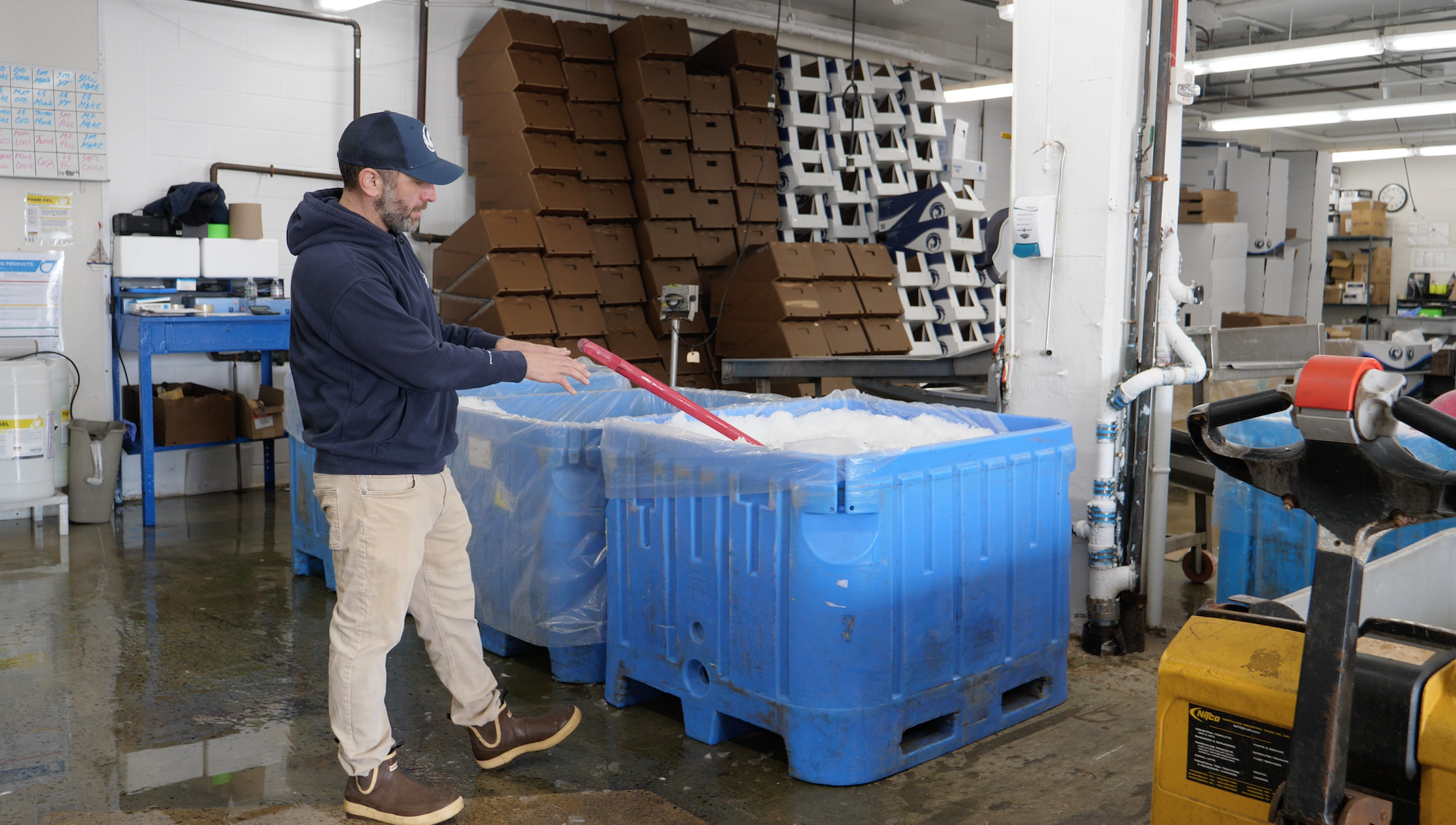
Freshly caught seafood is meticulously preserved at optimal temperatures. This critical first step in their processing chain ensures maximum quality and flavor is maintained from the moment fish arrives at the Boston Fish Pier facility.
The first stop was ground zero – where the fish arrive. Even on what Jared described as a "slow day" in the middle of winter, I was struck by the variety: tuna, scup, groundfish, and more, all meticulously packed in ice to maintain peak freshness. Jared explained that during summer's peak season, they might handle 30-40 giant bluefin tunas on the floor simultaneously.
What truly sets Red's Best apart is their technological communication system. While traditional seafood companies might seem stuck in the past, Jared has staff monitoring seafood markets in real-time, making split-second decisions that maximize value for both fishermen and customers.
The Boston Fish Pier: A Perfect Location
Standing on the pier watching trucks being unloaded, I couldn't help but appreciate the strategic location. Boats can deliver their catch directly to the facility – the ultimate farm-to-table scenario for seafood.
What many visitors don't realize is that they're walking on a piece of living maritime history. Opened in 1914, the Boston Fish Pier was once the longest pier building in the world and the center of New England's fishing industry. At its peak in the mid-20th century, over 300 million pounds of fish passed through this pier annually. The distinctive T-shaped structure was specifically designed to maximize dock space for fishing vessels while providing ample facilities for processing and distribution.
Through two World Wars, the Great Depression, and countless nor'easters, the Boston Fish Pier has remained a working hub of the seafood industry. While many historic piers across the country have been converted to tourist attractions or luxury condos, this pier continues to serve its original purpose – connecting fishermen with markets.

The Fish Pier crowded with fish carts, fishing boats, and workmen, ca. 1950
As I walked along the pier with Jared, the historical significance wasn't lost on me. The pier has supported generations of fishermen and seafood workers. The same waters have welcomed vessels returning with their catch for over a century. There's something profoundly authentic about a business like Red's Best operating in this historic space – honoring tradition while introducing technologies and methods that the pier's original occupants could never have imagined.
The Processing Room: Where Precision Meets Efficiency
The filleting room was a revelation in efficiency and cleanliness. Staff dressed in what looked like surgical gear – masks, gloves etc. – and worked with remarkable precision in an extremely cold environment. The cleanliness standards far exceeded what most of us achieve when filleting in our backyards.
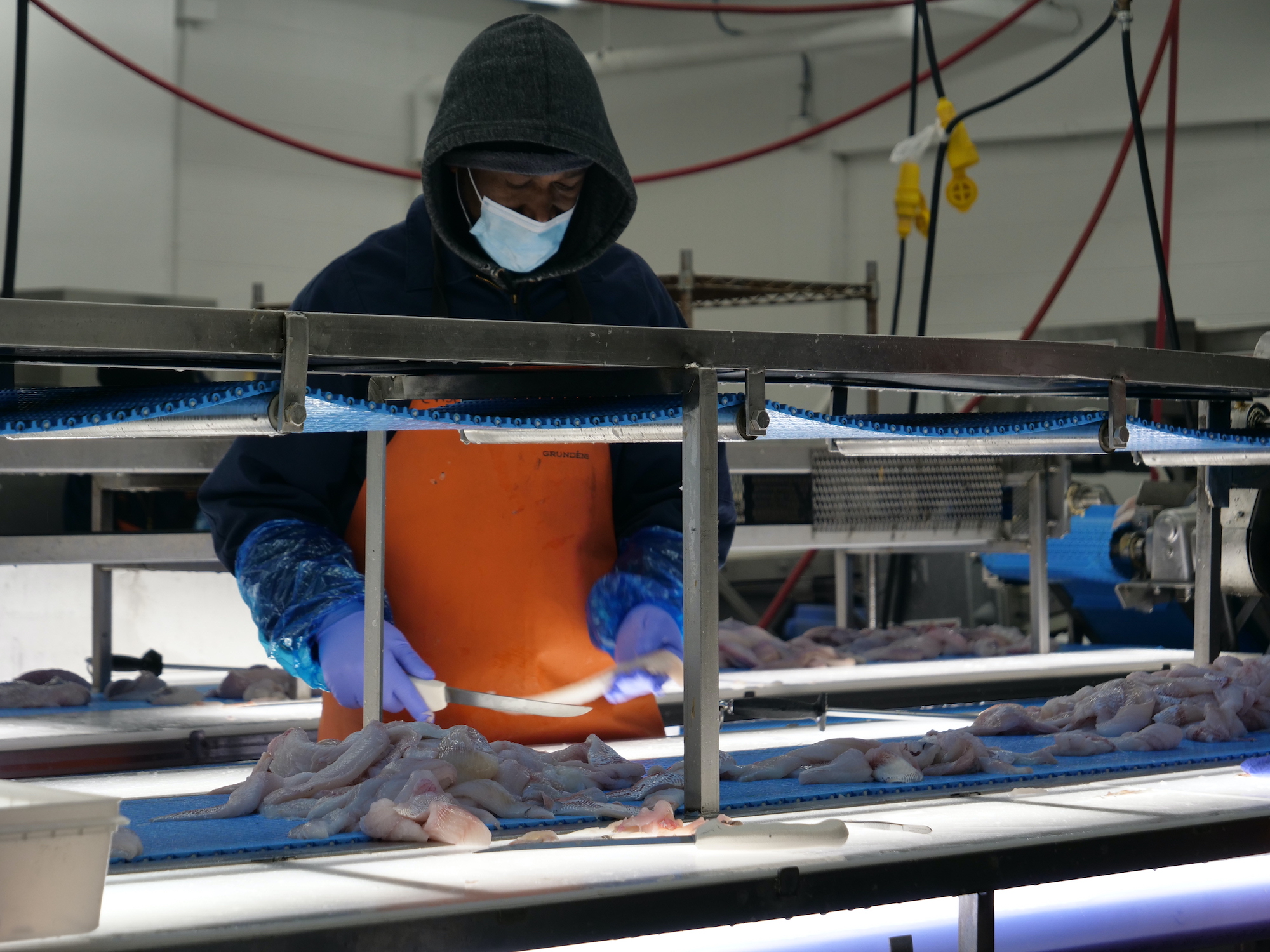
An expert filleter at Red's Best demonstrates the precision knife skills developed through years of experience. Each day, these skilled professionals process hundreds of fish with remarkable speed and minimal waste, transforming whole catches into perfectly prepared fillets ready for distribution to restaurants and consumers across the country.
Walking through the processing facility, I was struck by the methodical flow of operations. Fish enter at one end through a systematic process that ensures maximum efficiency while maintaining the highest quality standards.
The journey begins with a large hopper filled with ice and water, where fish travel up a conveyor belt to be delivered directly to the cutters. This eliminates the inefficient process of constantly reaching into bins to retrieve fish – a small but significant improvement that adds up when processing thousands of fish daily.
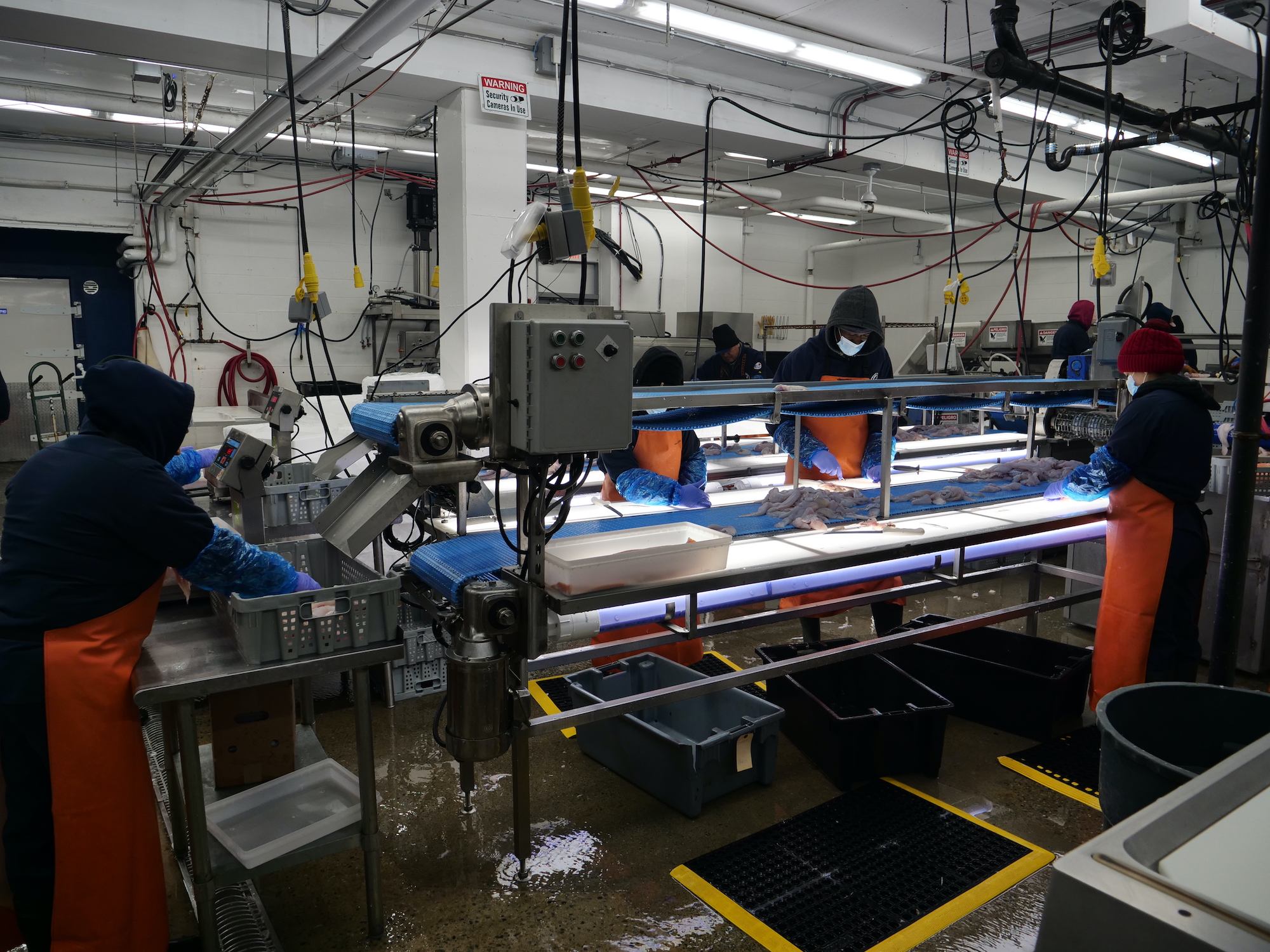
The Red's Best's efficient processing line in action: Skilled cutters work in a synchronized system where each station specializes in a specific task - from initial filleting to skinning to final trimming. This assembly-line approach allows them to process thousands of pounds of fresh seafood daily while maintaining exceptional quality and minimizing waste.
What impressed me most was the ballet-like coordination between workers. Everyone knew their role precisely, whether scaling fish through a water-jet scaler, operating the filleting stations where primary cuts are made, managing the skinning machines, or working at what they call "candling tables" for final trimming.
The two-belt system – one carrying fish racks (bones) out for disposal and the other bringing fillets to the next station – kept everything moving smoothly without cross-contamination.
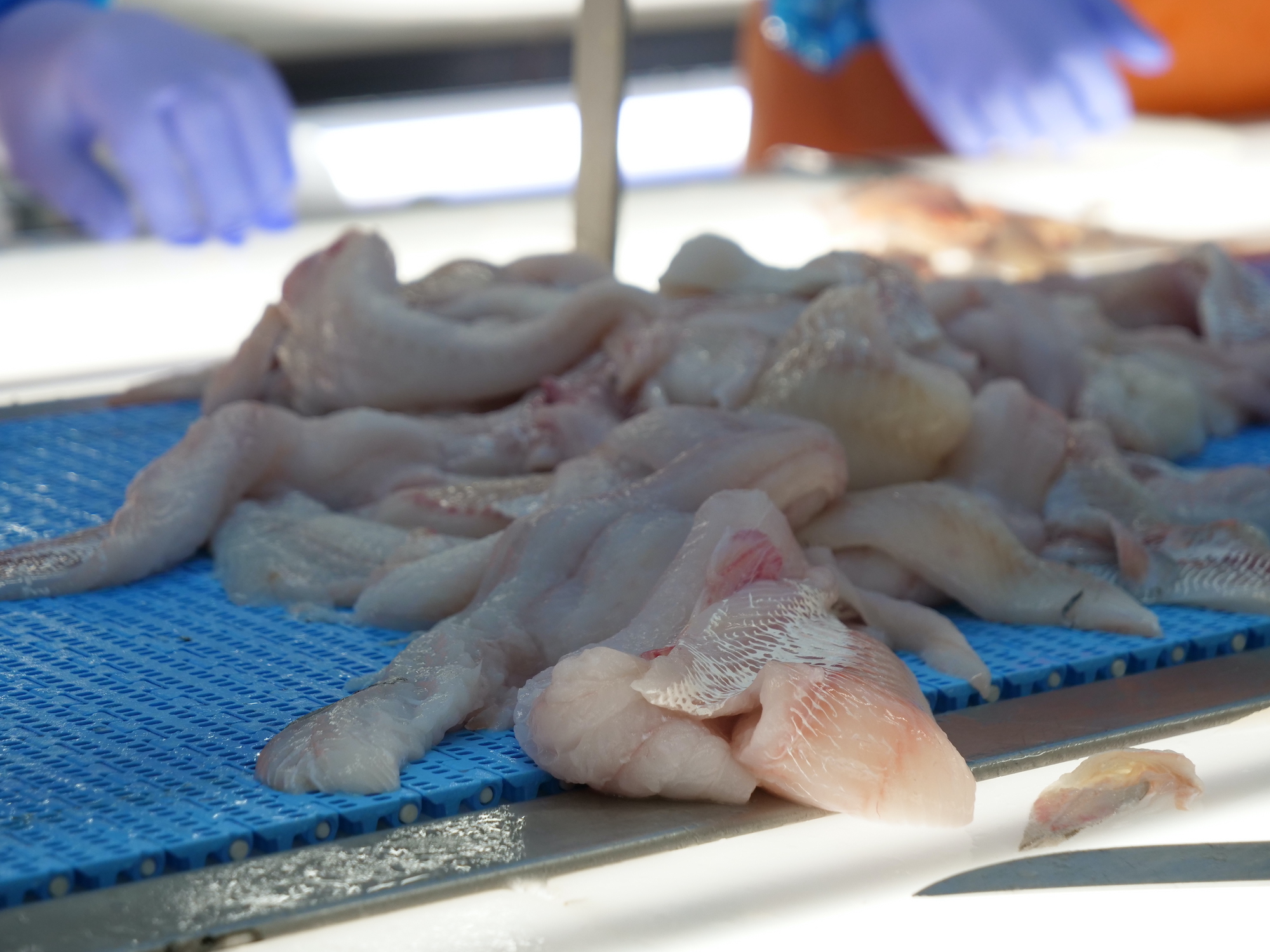
Pristine fillets ready for market: The end result of Red's Best's meticulous processing system yields perfectly trimmed, restaurant-quality cuts that showcase the natural beauty and freshness of New England's seafood. Each fillet represents both the bounty of local waters and the skilled craftsmanship of experienced fish cutters.
The temperature in the room was kept intentionally cold, not just for food safety but to maintain the perfect texture of the fish during processing. As someone who's cleaned plenty of fish in warm weather, I could immediately appreciate how this controlled environment allows for cleaner, more precise cuts.
I watched in awe as an expert filleter demonstrated her craft on various species – fluke, sea bass, scup, pollock, and skate wing. Her knife was constantly being sharpened, a detail that makes all the difference in creating perfect fillets.
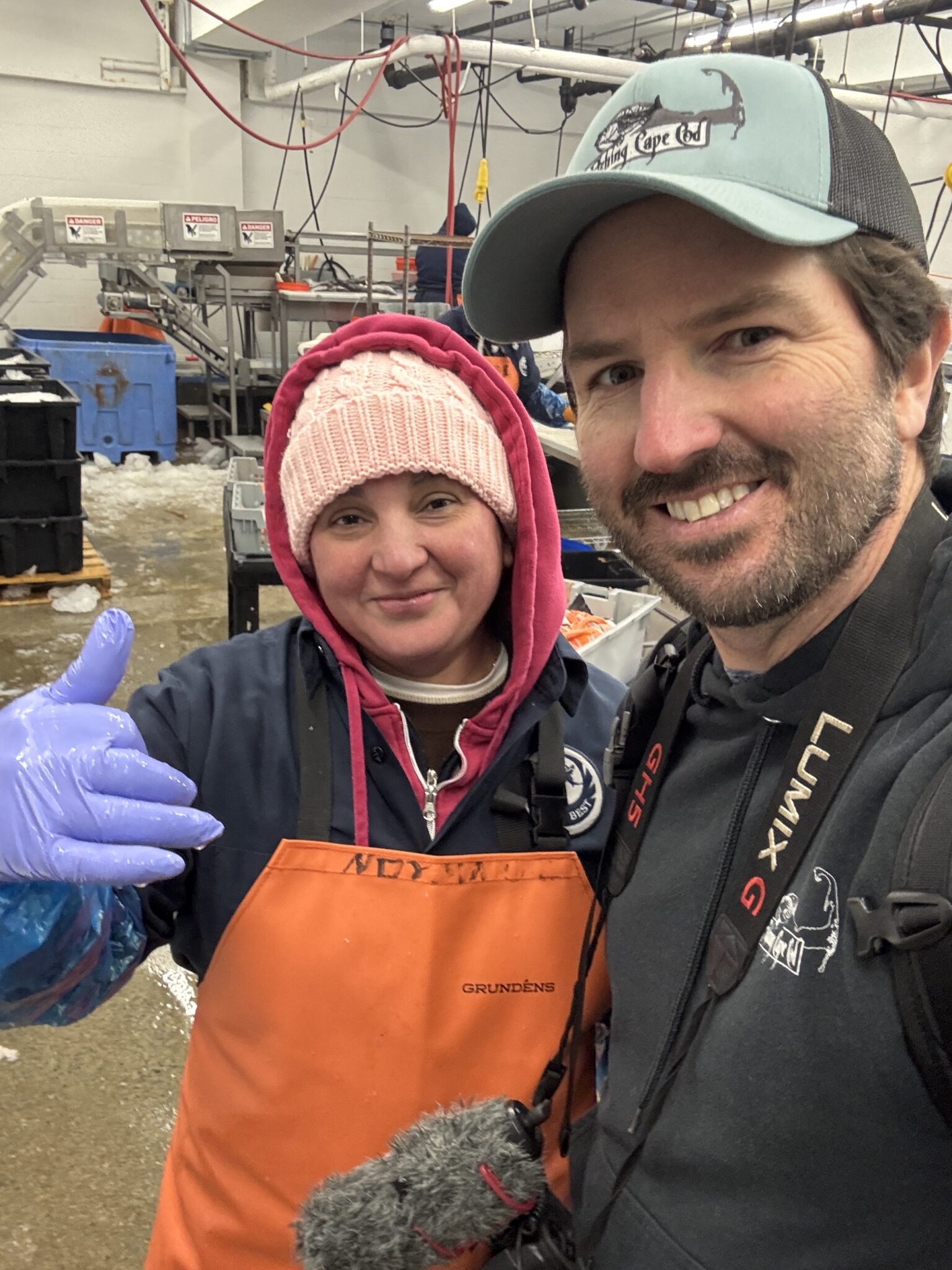
Capturing a moment with one of Red's Best's most skilled filleters, whose remarkable knife skills and precision were on full display during my visit. Her expertise in handling numerous species – from fluke to sea bass to skate – demonstrates the artistry behind professional seafood processing. It's masters of the craft like her who will make the 'how to fillet' video series for My Fishing Cape Cod members such a valuable resource.
With minimal waste and maximum yield, she transformed whole fish into market-ready fillets in seconds. The economy of movement was striking – no wasted motion, no hesitation, just pure skill developed through thousands of repetitions.
Unlike many processing facilities that specialize in just a few species, Red's Best handles everything from groundfish like cod and haddock to flatfish like fluke, round fish like scup and sea bass, and even specialized items like skate wing and salmon. Each requires different techniques, and the staff seamlessly switches between them as different species move through the line.
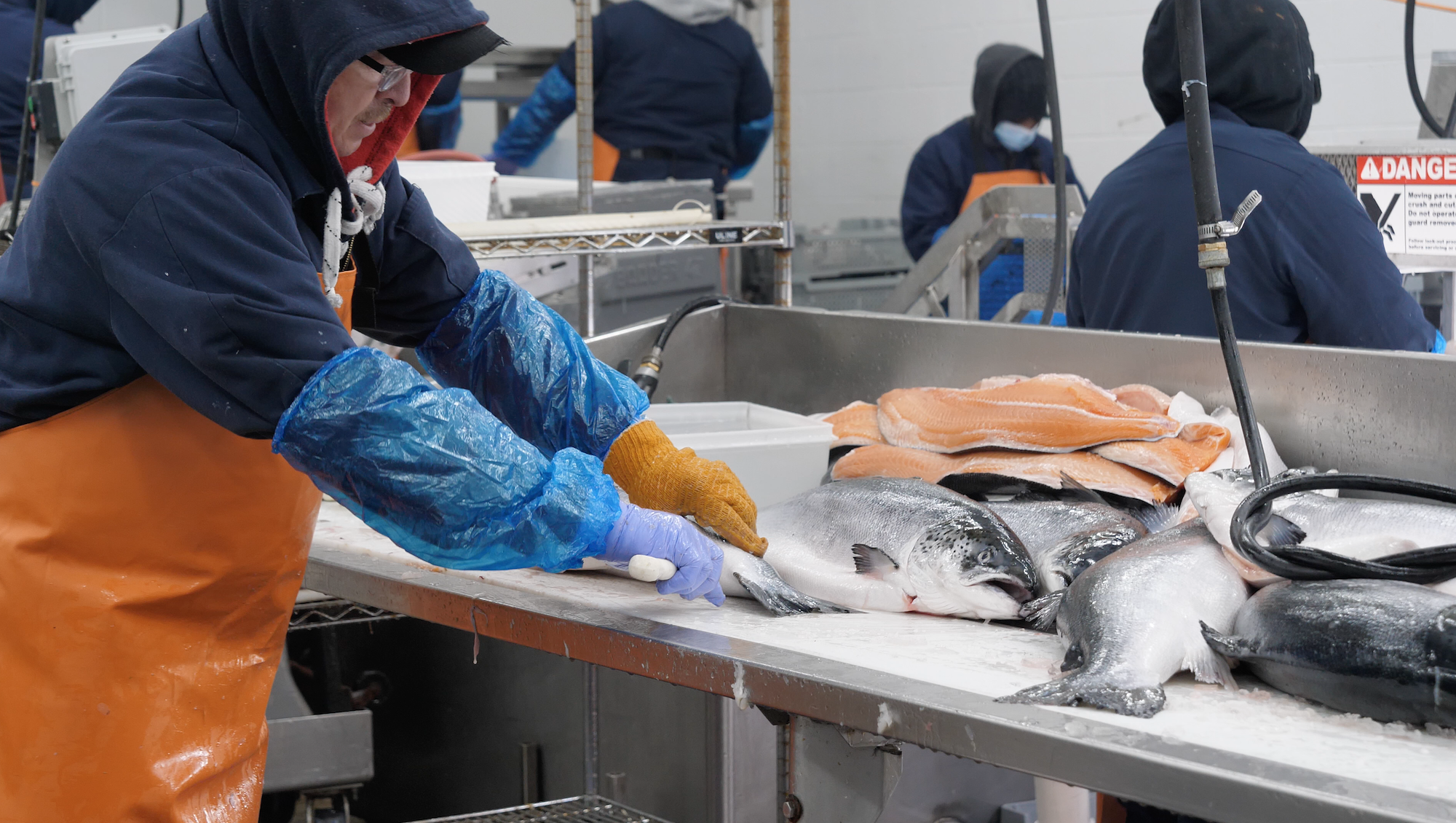
Though not caught locally in New England waters, Red's Best includes high-quality salmon in their product lineup to provide customers with a comprehensive selection of seafood options. The same meticulous standards and skilled craftsmanship applied to local species are evident in their handling of this popular fish.
These videos will soon be available exclusively for My Fishing Cape Cod members, providing professional guidance you won't find anywhere else. Whether you're looking to improve your own filleting skills or simply gain appreciation for the craft, these demonstrations showcase the art of fish preparation at its highest level.
Beyond Fresh: Red's Best's Approach to Freezing Technology
One aspect that particularly impressed me was Red's Best's advanced freezing technology. Contrary to the belief that "fresh is always best," Jared explained how their flash-freezing methods preserve fish at peak quality. Their sushi freezer reaches an astounding -121°F, locking in freshness almost instantaneously.
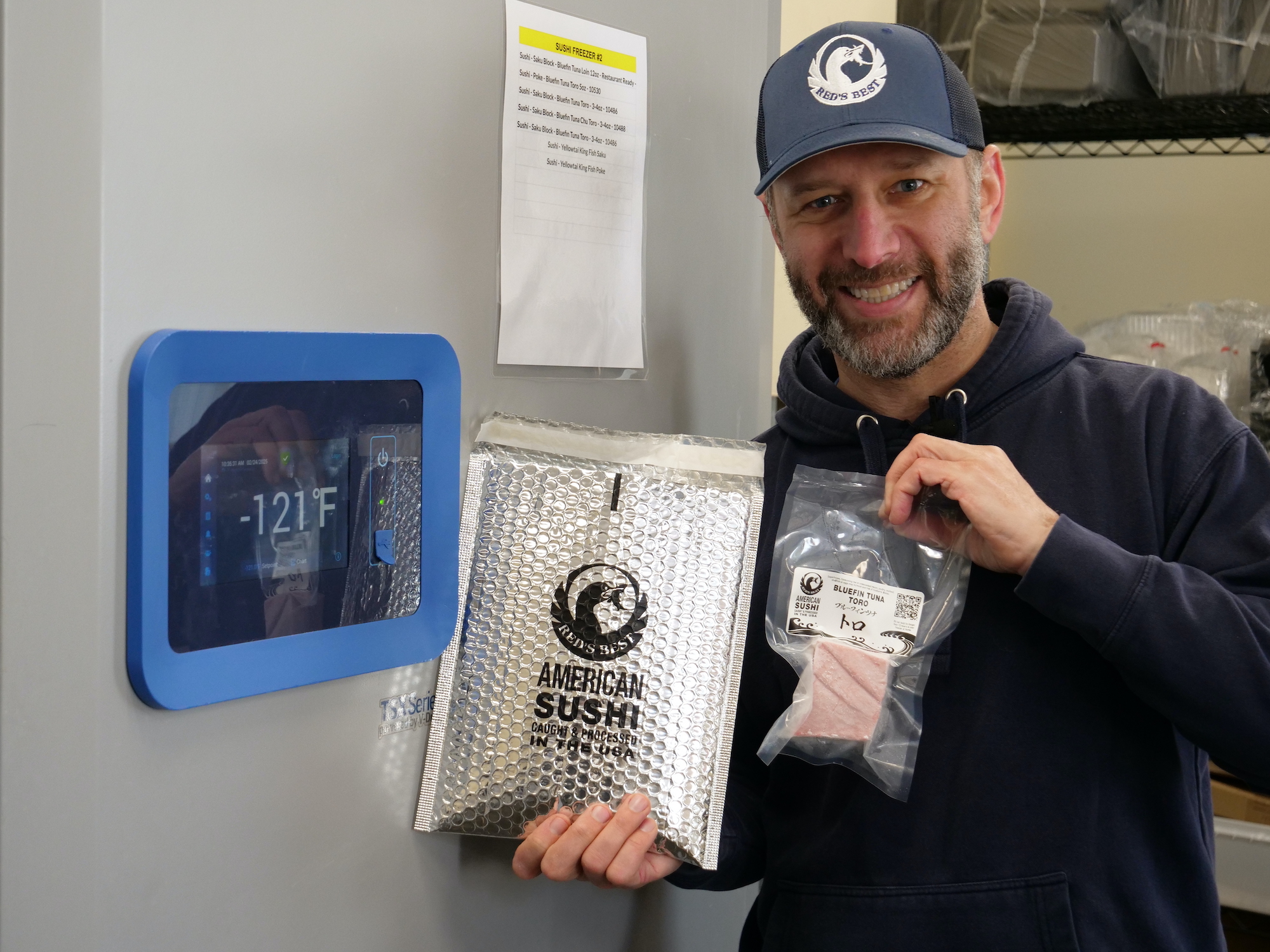
Jared Auerbach displays Red's Best's premium sushi-grade tuna alongside their specialized freezer maintaining an astounding -121°F. This cutting-edge technology keeps tuna at temperatures far below conventional freezers, locking in peak freshness and flavor that rivals any 'fresh' fish. It's this innovative approach to preservation that allows Red's Best to deliver exceptional quality seafood directly to consumers' homes.
Jared himself confessed that despite having access to the freshest seafood imaginable, he primarily eats their frozen products at home. The convenience of having high-quality, professionally processed seafood available whenever you want it represents a paradigm shift in how we might incorporate more seafood into our diets.
From Boat to Plate: The Aggregation and Distribution System
At its core, Red's Best serves as a crucial link between fishermen and consumers. With four wholesale facilities – including the Boston location I visited, one in Chatham (which runs the Chatham Fish Pier), and two in New Bedford – they've built an impressive aggregation and distribution network.
Fish are brought in from various docks, processed according to exacting standards, and then shipped throughout the country (and internationally) to wholesalers who supply high-end restaurants and retailers. Their system handles everything from giant bluefin tuna to periwinkles and surf clams, processing up to 100,000 pounds of seafood daily.
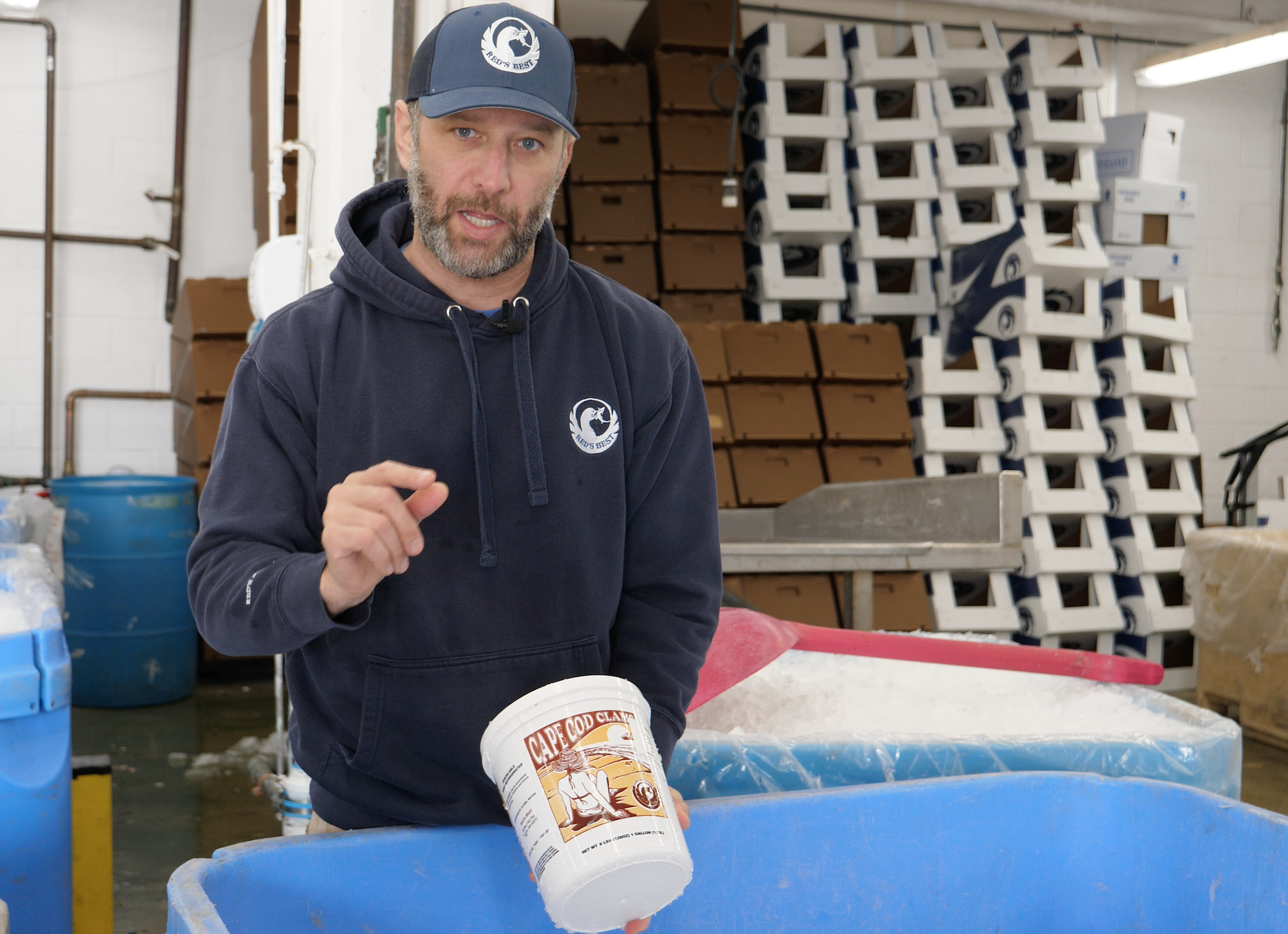
Jared proudly displays Red's Best's 'Cape Cod Clams' – one of their premium shellfish products harvested from the pristine waters of Cape Cod. This locally-sourced offering represents Red's Best's commitment to connecting consumers with the authentic flavors of New England while supporting the region's shellfish harvesters and maintaining the highest standards of quality and sustainability.
What struck me was the relentless nature of the business. As Jared explained, "This is a perishable item. It's really hard to count, hard to keep track of. We're good at filtering through all the madness that happened yesterday to focus on the one or two things that need attention, because we're already into today's catch."
The Future of Seafood: Direct-to-Consumer Innovation
Perhaps the most exciting development is Red's Best's push toward direct consumer access. By summer 2025, they plan to launch real-time delivery within 15 miles of the Boston Fish Pier – essentially a virtual fish market where consumers can order seafood that's literally just off the boat and have it delivered within 45 minutes.
"I feel like everything's been converging on this opportunity," Jared explained with palpable excitement. "You catch a bluefin, put it on our truck tonight, and tomorrow morning consumers can buy that in real time and have it delivered to their house right away."
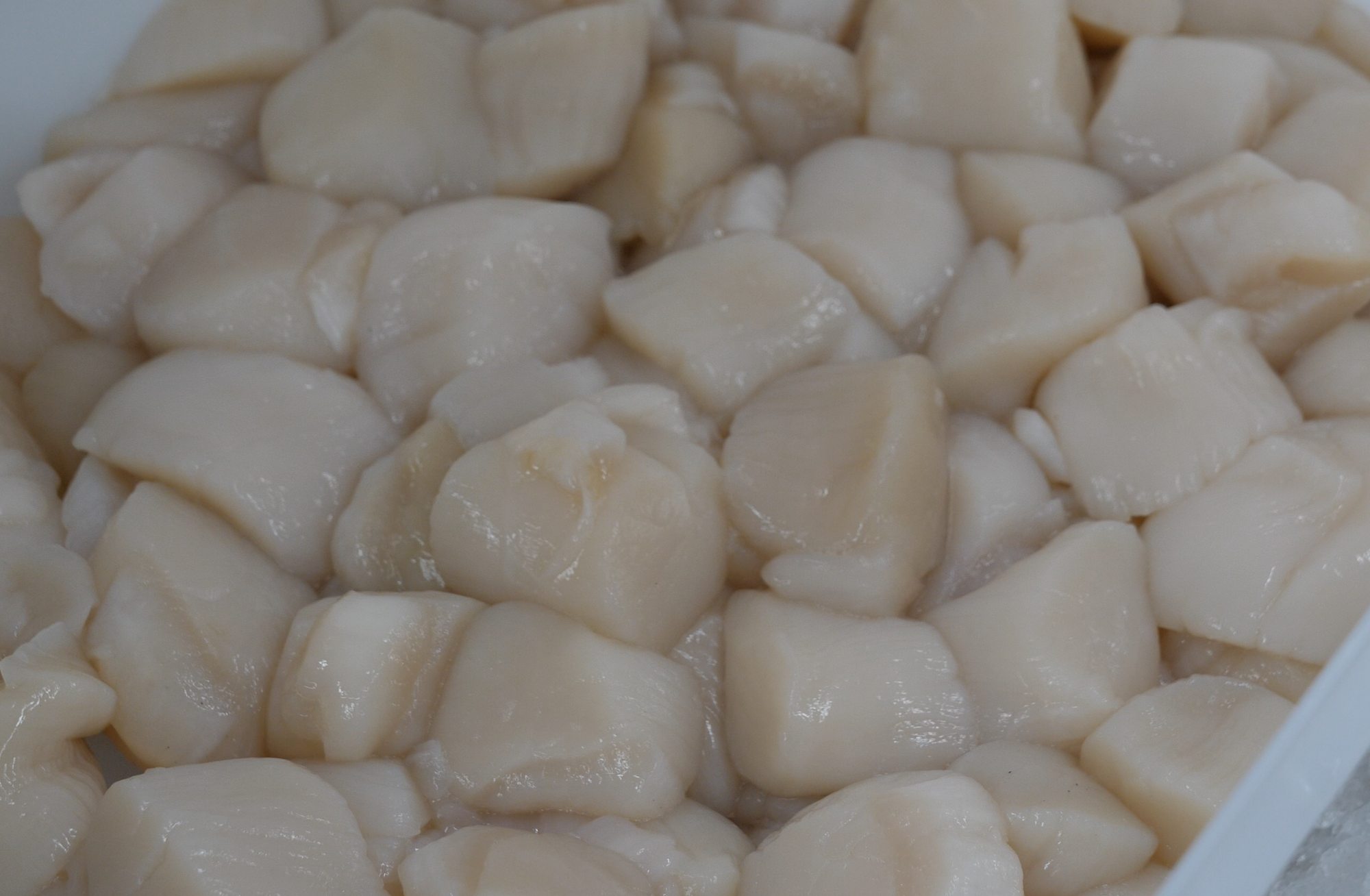
Premium 'jelly bag' scallops from Red's Best – notice the glistening, translucent appearance that indicates exceptional freshness. These dayboat scallops, harvested from New England waters, maintain their natural moisture and sweet flavor through careful handling. The slight wobble when touched (what industry insiders call the 'jelly' effect) is the mark of truly fresh, chemical-free scallops that haven't been treated with preservatives.
This direct-to-consumer approach extends to their commercial kitchen on the upper floor of the Boston facility, where they produce sushi rolls and value-added products like stuffed clams, salmon burgers, crab cakes, and fish cakes – all using their locally-sourced seafood. The facility is licensed both as a commissary kitchen and a value-added production room, allowing them to sell these products both directly to consumers and to other retailers.
Why Red's Best Matters for New England's Fishing Communities
Beyond the impressive logistics and technology, what resonated most was the purpose behind Red's Best. As Jared put it, "Ultimately, Red's Best is a service provider to fishermen. We're here to help work with you, provide dockside services, handle your fish, and maximize the profitability of your fishing business."
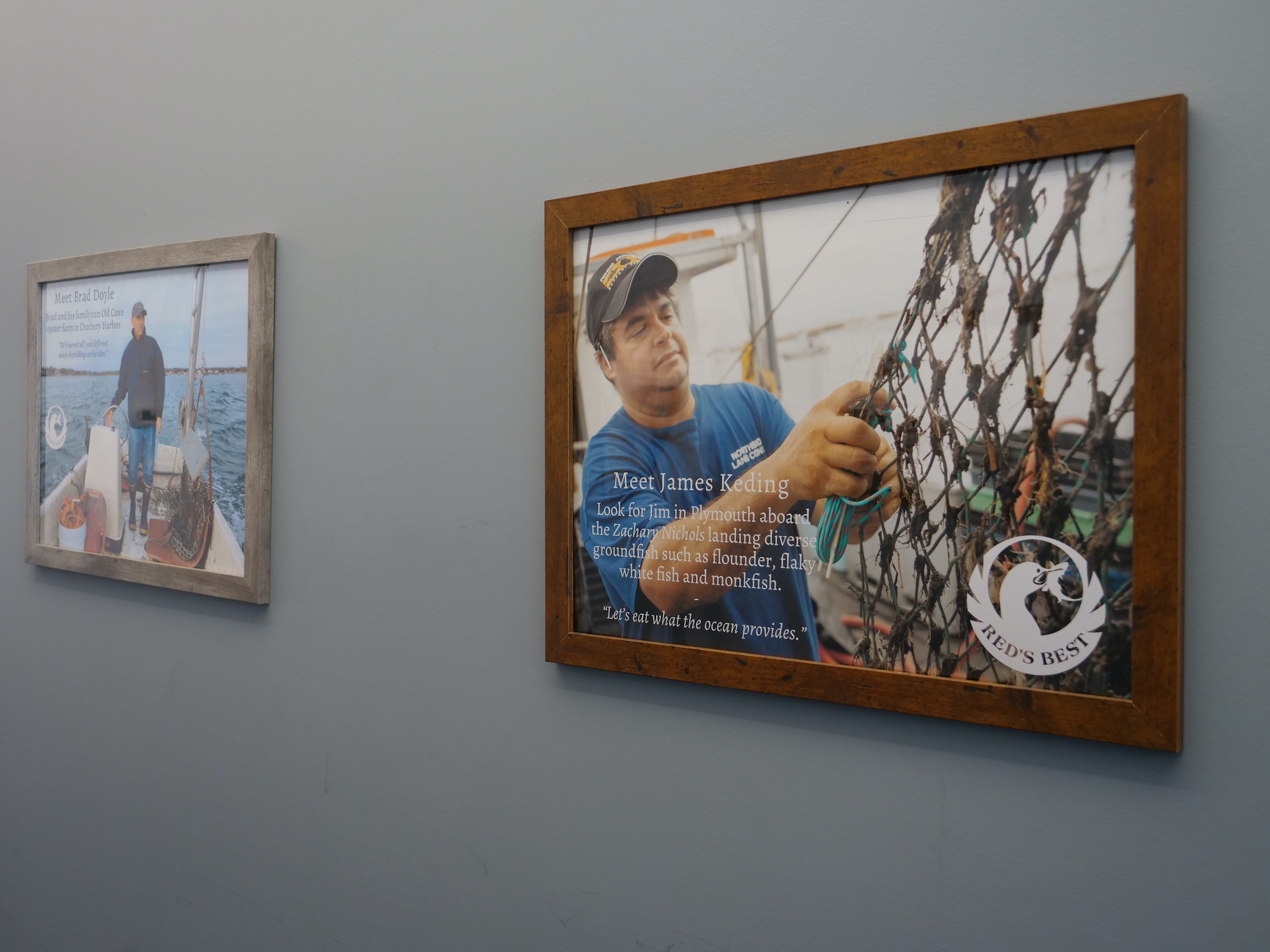
The face of New England's fishing heritage: The gallery of local fishermen displayed prominently in Red's Best's office hall represents the heart and soul of their operation. Each photograph tells the story of a hardworking harvester whose livelihood depends on the sea and whose catch makes its way through Red's Best to consumers. This visual reminder of the human element behind every fish reinforces Jared's founding philosophy that 'Red is every fisherman' – honoring the individuals who brave the waters to bring us sustainable, local seafood.
By creating efficient systems for aggregation, processing, and distribution – and now direct consumer access – Red's Best is ensuring that local fishing remains economically viable while consumers get access to the highest quality seafood possible.
Taking Red's Best Home: The Ultimate Seafood Experience
Before leaving, Jared gifted me some of their super-frozen sushi-grade tuna, explaining that all I needed was a sharp knife to create restaurant-quality sushi at home. This encapsulates the Red's Best philosophy: demystifying seafood and making it accessible to everyone.
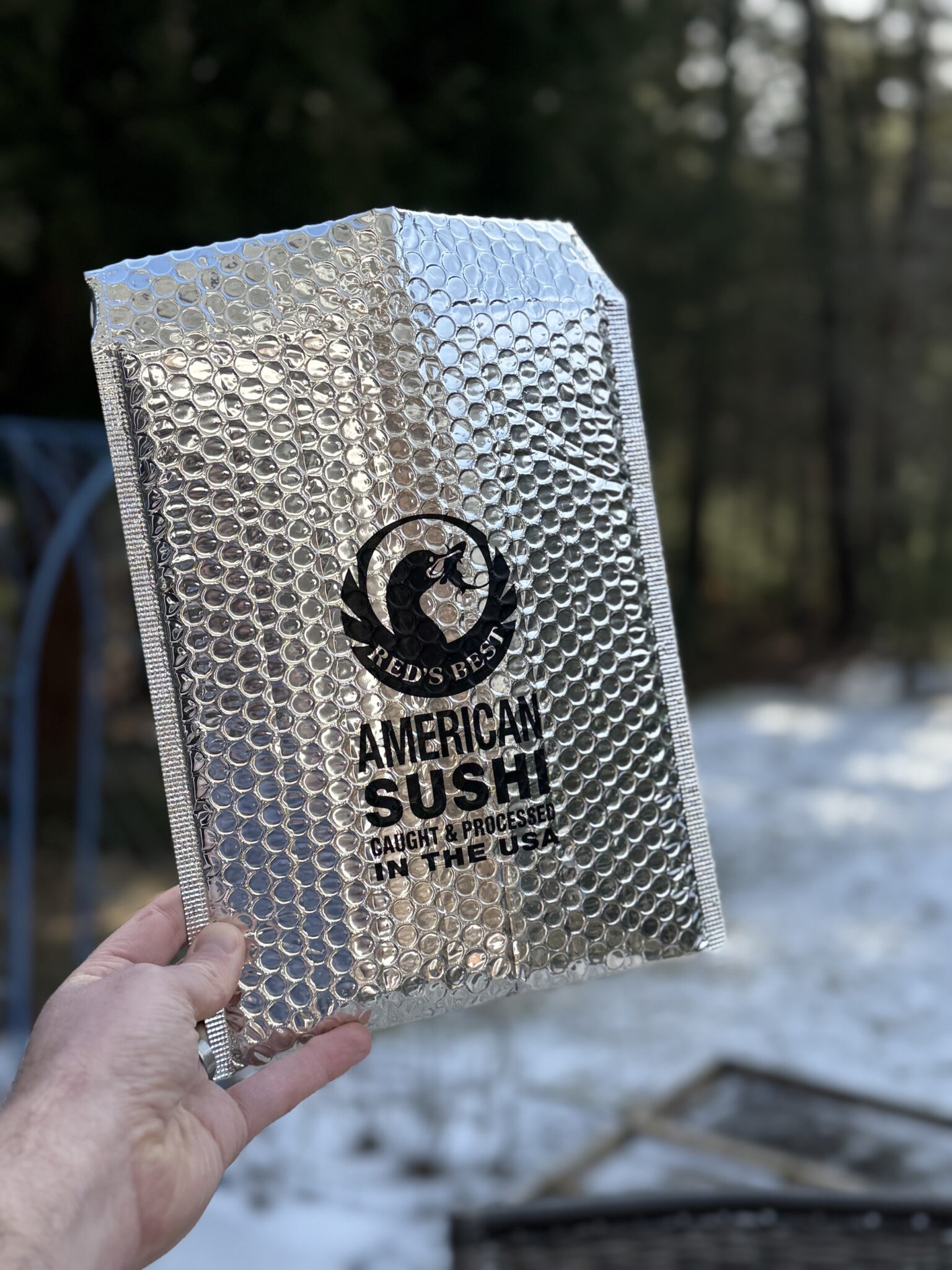
A parting gift from Red's – premium sushi-grade tuna flash-frozen at -122°F that rivals anything you'd find in high-end restaurants. This super-frozen delicacy, processed and packaged right at Red's Best's Boston facility, demonstrates how modern freezing technology can deliver exceptional quality seafood directly to consumers. Following Jared's simple instructions – thaw for two hours and slice with a sharp knife – transforms this package into a restaurant-quality sushi experience in your own home.
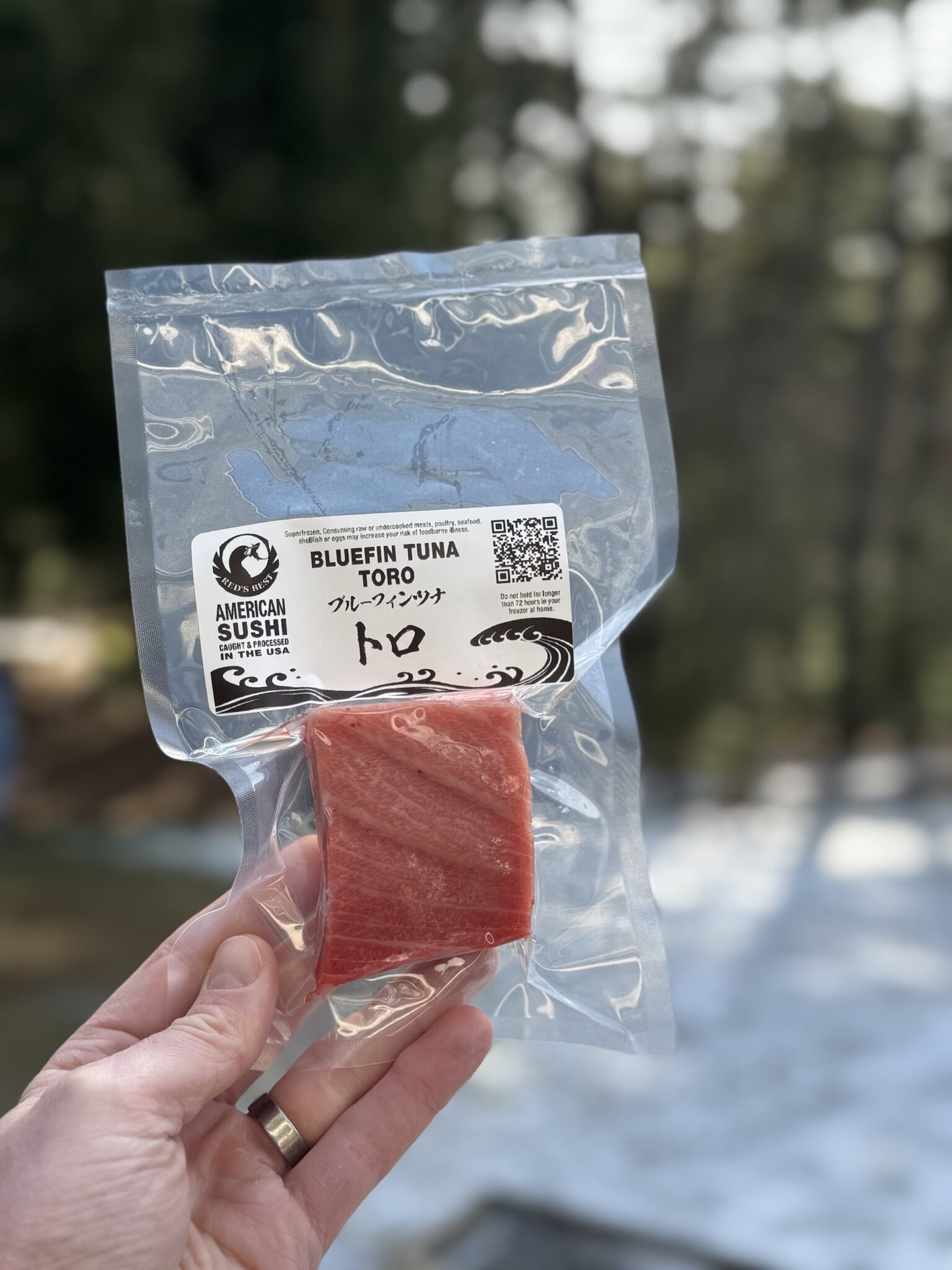
A culinary treasure to take home: premium bluefin tuna toro from Red's Best. Toro, the prized fatty belly section of the tuna, is considered the ultimate delicacy in sushi, known for its buttery texture and rich, melt-in-your-mouth flavor profile. Flash-frozen at -122°F within hours of being caught, this super-premium cut demonstrates Red's Best's commitment to providing restaurant-quality seafood directly to consumers while maintaining the utmost respect for these magnificent fish.
I left Boston with a profound appreciation for what Jared and his team have built. In an industry often perceived as traditional or even old-fashioned, Red's Best represents a forward-thinking approach that honors the heritage of New England fishing while embracing technology to create a more sustainable future.
For those of us passionate about seafood, whether as anglers or consumers, Red's Best offers a glimpse into how we might better connect with our local fishing communities and incorporate more seafood into our diets. Their innovations around freezing technology, real-time market monitoring, and direct consumer access are likely to shape the industry for years to come.
Experience Red's Best For Yourself
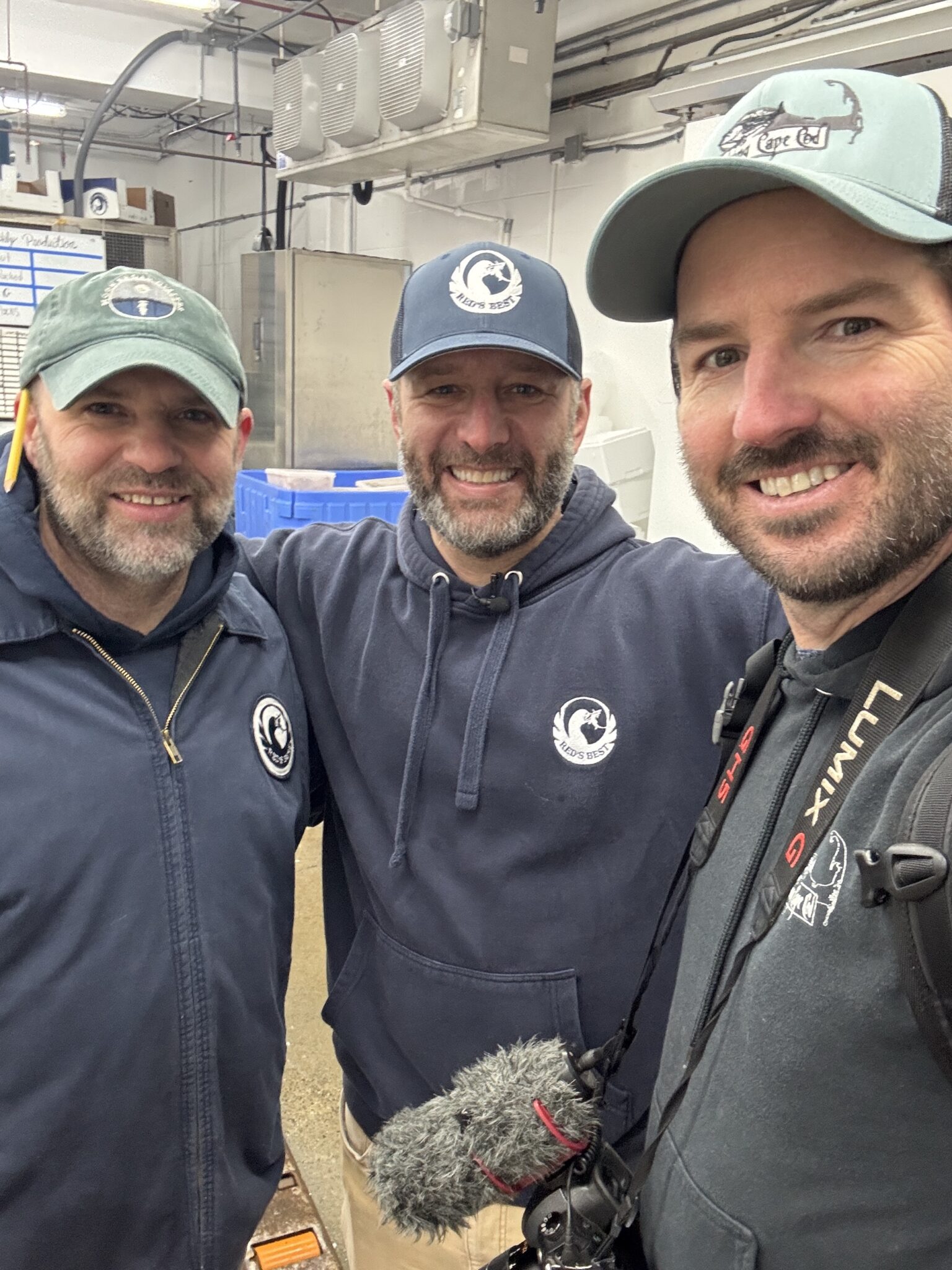
Wrapping up an enlightening day at Red's Best: (left to right) Max, the skilled fillet room manager who orchestrates the precise processing operation; Jared Auerbach, the visionary founder whose passion for connecting fishermen to consumers is revolutionizing the seafood industry; and myself, grateful for the behind-the-scenes tour of this innovative New England seafood operation. This visit marks the beginning of an exciting collaboration that will bring professional filleting techniques to My Fishing Cape Cod members while showcasing the future of sustainable seafood distribution.
If you're in Boston, you can visit Red's Best retail location at the Boston Public Market. They also offer pre-order fish pier pickup and home delivery for those within the delivery area. By summer 2025, look for their real-time delivery service to launch.
For My Fishing Cape Cod members, stay tuned for exclusive filleting technique videos featuring Red's Best expert filleters. These professional demonstrations will elevate your fish cleaning skills and help you get the most from your catch.
Whether you're a recreational angler, a seafood enthusiast, or a chef seeking the finest ingredients, Red's Best represents a new paradigm in seafood – one where technology, tradition, and sustainability come together to deliver an exceptional product and experience.
Have you visited Red's Best or tried their products? Share your experience in the comments below!
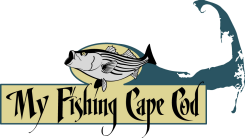

I am familiar with Foleys and Captain Mardens seafood in my home area of MetroWest but not Red’s Best. It sounds like a great alternative. How can I access their products in my area now?
Also I’m sure that my home freezer does not freeze at the temperatures that you mentioned at Red’s Best. Does that mean that my time frame for keeping frozen fish from them should be limited? What is the best way to defrost their fish for a night-time dinner?
Like Jake, I thought the 1950’s photo of the Boston Fish Pier was fascinating. Jake, you’ll have to tell Ryan about the over 100 year phenomenon of the “No Name Restaurant” on the pier. I remember being in a huge line waiting for a table or the call out for a “single” to be able to jump the line.
Hi Dex! Red’s best delivers straight to your door. Here’s a link to their online shop https://redsbest.com/shop/
The -121 F temperature is only for the bluefin tuna. You can just toss it in your freezer upon arrival, or allow it to thaw out on the counter for 2 hours and then consume.
The “No Name Restaurant” sounds intriguing. Thanks for the comment Dex!
Great stuff! Jared and the Red’s Best team have a remarkable ability to innovate and adapt. It’s always a pleasure taking home fresh catch from the Public Market or Fish Pier.
I’m looking forward to seeing what they come up with next. Thanks for the comment John. Enjoy the rest of your weekend!
A great article about Red’s and professional filleting! Looking forward to seeing the videos when they are available!
Glad you enjoyed the article Gretchen. We’ll be editing those fillet videos and posting them as soon as possible. It’s amazing watching Norma (the expert cutter) do her fillet work! I think you’ll enjoy it.
An excellent article with lots of great insights and photos about an integral part of the fishing industry. Thanks for sharing this.
Glad you enjoyed the article Richard and thank you for the comment!
In speaking with Jared yesterday about the article, he wanted to once again say how important his workers and teammates, and the fishermen, are to this operation. Without the steadfast work of those on the Red’s Best team, and the efforts of the fishermen he works with, none of what you read about in this article would be possible. From the cutters in the fillet room, to the folks packaging tuna, to the guys who are out there fishing through the winter, to the team managing logistics…this is what Jared had to say…”It’s guys like Cullen and Mike (shared friends I think), and all the hard working men and women in our factories who are the real heroes that our brand is trying to represent. Im just trying to build the platform that connects consumers to that.”
Thanks again for reading and for the comment. My best to Kathy! Have a nice weekend!
Jared has created an amazing high tech business that benefits fishermen and consumers. Loved the 1950 OLD picture of the Boston fish pier. The year of my birth.
I also enjoyed that photo. There are several really awesome old school photos of the pier on Wikipedia. It’s pretty wild how much things have changed since you were born.